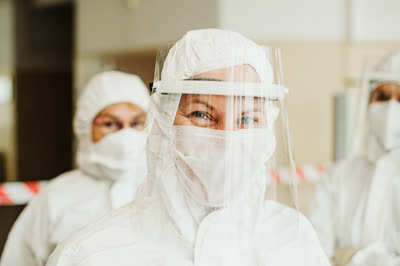Covid-19 Frequent Q&AN
What is COVID-19?
COVID-19 is the disease caused by a coronavirus called SARS-CoV-2. WHO was informed about this new virus on 31 December 2019, after a report of a cluster of cases of so-called viral pneumonia in Wuhan, People’s Republic of China.
What are the symptoms of COVID-19?
The most common symptoms of COVID-19 are
-
fever
-
chills
-
sore throat.
-
Other symptoms that are less common and may affect some patients include:
-
muscle aches
-
severe fatigue or tiredness
-
runny or blocked nose, or sneezing
-
headache
-
sore eyes
-
dizziness
-
new and persistent cough
-
tight chest or chest pain
-
shortness of breath
-
hoarse voice
-
heavy arms/legs
-
numbness/tingling
-
nausea, vomiting, abdominal pain/ belly ache, or diarrhoea
-
appetite loss
-
loss or change of sense of taste or smell
-
difficulty sleeping.
Symptoms of severe COVID‐19 disease which need immediate medical attention include:
- difficulty in breathing, especially at rest, or unable to speak in sentences
- confusion
- drowsiness or loss of consciousness
- persistent pain or pressure in the chest
- skin being cold or clammy, or turning pale or a bluish colour
- loss of speech or movement.
Who is most at risk for serious illness from COVID-19?
People aged 60 years and older and those with underlying health issues, such as blood pressure, diabetes, chronic health problems (heart, lungs, kidneys, and brain), low immune function/ immunosuppression (including HIV), obesity, cancer, and unvaccinated people are at the highest risk of serious illness.
However, anyone, irrespective of age, can become ill with COVID-19 and can have serious illnesses and die from it.

Are there long-term effects of COVID-19?
Some people with COVID-19 may go on to have lingering symptoms, including tiredness, respiratory, and neurological symptoms, regardless of whether the illness was severe enough to require hospitalization. Such long-term effects are referred to as post-COVID-19 condition.
Unless we know who’s infected, how are we supposed to protect others and ourselves?
Take preventive measures to keep you and others from COVID-19 infection: Keep a distance, wear a mask in crowded and badly ventilated places, practice hand hygiene, respiratory etiquette—cover your mouth and nose with a bent elbow or a tissue when coughing or sneezing, getting vaccinated, and staying up-to-date with booster doses.
Check local advice where you live and work.
What test shall I undertake to see if I have COVID-19?
There will basically be two major categories of tests that will identify whether you have been infected with SARS-CoV-2—the virus that causes COVID-19. Molecular tests are considered the gold standard and most sensitive for the diagnosis of SARS-CoV-2 infection, which includes polymerase chain reaction. These tests detect the virus by amplifying the viral genetic material to the detectable levels in a sample. Rapid antigen tests (Rapid Diagnostic Test, RDT) detect viral proteins, that is, antigens. They are less complex and faster than molecular tests and available for testing by trained operators or by the individual themselves (sometimes called self-tests). They work best when there is more virus in the community, and when they are taken from an individual at the time of maximum infectiousness, which is usually within the first 5–7 days after the onset of symptoms. Samples from either test type are taken from the nose and/or throat using a swab.